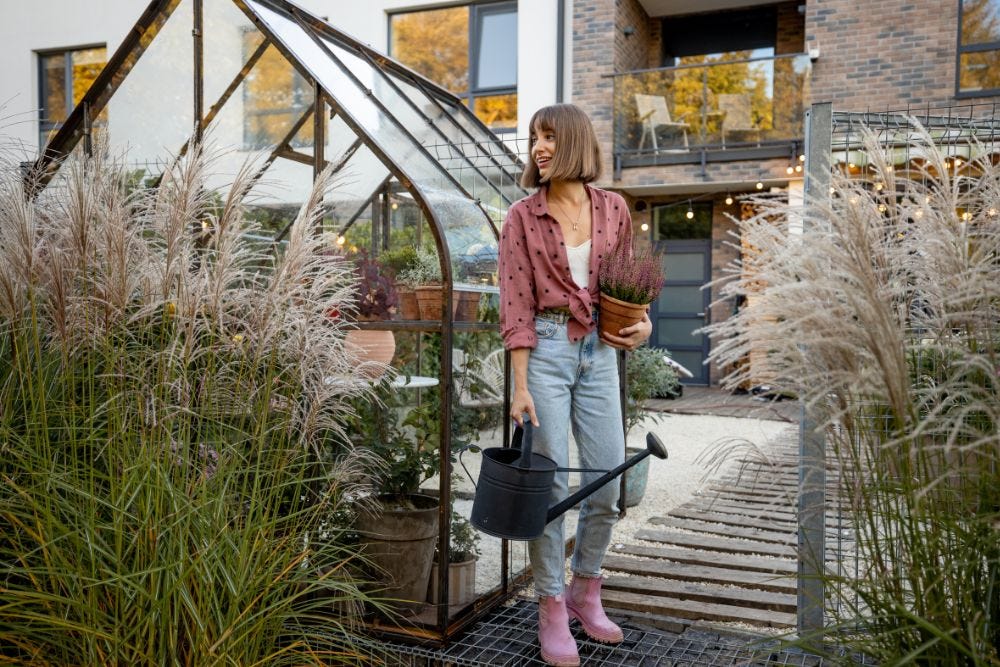
The Lawn in March
Assuming you’ve been following our tips, then your lawn should be in good condition as it emerges from winter:
Should your lawn lack colour and the leaf growth be a little weak, then if the weather is fine and warm, apply a high nitrogen fertilizer – but not too much! You want to get your lawn into steady growth with a good colour, but not too fast growing!
On a dry day, continue to sweep clear worm castes that have accumulated on the lawn.
In dry, frost-free weather you can be mowing if necessary, but keep those blades high!
You can be thinking of buying seed or ordering turves for a new lawn or repairing an established one next month.
The Flower Garden
March is a busy month for sowing tender annual seed (half hardy annuals) for your summer displays, in a propagator in the greenhouse or on a window-sill indoors. There’s still time to sow petunias, impatiens, lobelia, zinnias and many more. Make sure though you can maintain the germination requirement printed on the packet!
No facilities for sowing inside in the warm? No worries, there are lots of flowers that can be sown direct outside late in March or April such as cornflowers, cosmos, nasturtiums etc. You can start preparing the soil in the chosen areas if the weather allows.
Perennial plants i.e. those that live for a number of years can be planted in March and there is still time to lift and separate existing plants if they have become overcrowded before they burst into active growth. Feed with a general purpose fertilizer formulated to last all season.
Summer-flowering tubers like dahlias and corms like gladioli can be planted later in the month.
Maybe you planted autumn bulbs like narcissi last year. Hopefully you have a great display, Remember to remove faded flower stems, but leave the foliage to build the bulbs for flowering next spring.
The Vegetable Plot
March is a busy month in the greenhouse and garden!
Let’s start with sowings to be made on the window sill or greenhouse
Tomatoes are always popular, there’s just so much to choose from, from old favourites like Moneymaker and ‘cherry’ sized Gardeners Delight, to the new ‘Blight’ resistant varieties such as Crimson Cocktail. Peppers need a long growing season, especially chillis!
Begin ‘chitting’ early potatoes indoors in a tray (standing them on end in a light position to encourage shoot production ready for planting out.)
Outdoors, of course it’s all weather dependant. It can help to lay black polythene or place cloches down to absorb the sun’s rays and warm up the soil.
If you have garden compost available or access to well-rotted farmyard manure, it’s a good idea to dig this in or mulch established plants.
Should you have raised beds, you will probably get an earlier start, since the soil will warm up quicker.
Weather allowing, you can make sowings of peas, broad beans, beetroot, radish, carrots, lettuce, spring onions and parsnips.
The Fruit Garden
There is still time to plant bare root ‘cane’ fruit like raspberries and blackcurrants and ‘soft fruit’ e.g. strawberries.
Now too, is the time to apply a ‘slow-release’ fertilizer such as blood, fish and bone, to support growth through the summer and encourage fruiting. N.B. remember that blueberries prefer an acid soil, so use an ericaceous fertilizer.
Remember there’s still plenty of time for night frosts, so cover wall-planted nectarines and peaches with horticultural fleece.
Garden Shrubs & Trees
Complete pruning of roses. Finish too, pruning of winter flowering shrubs.
Apply slow-release fertilizer around the base of plants to supply summer long feed.


